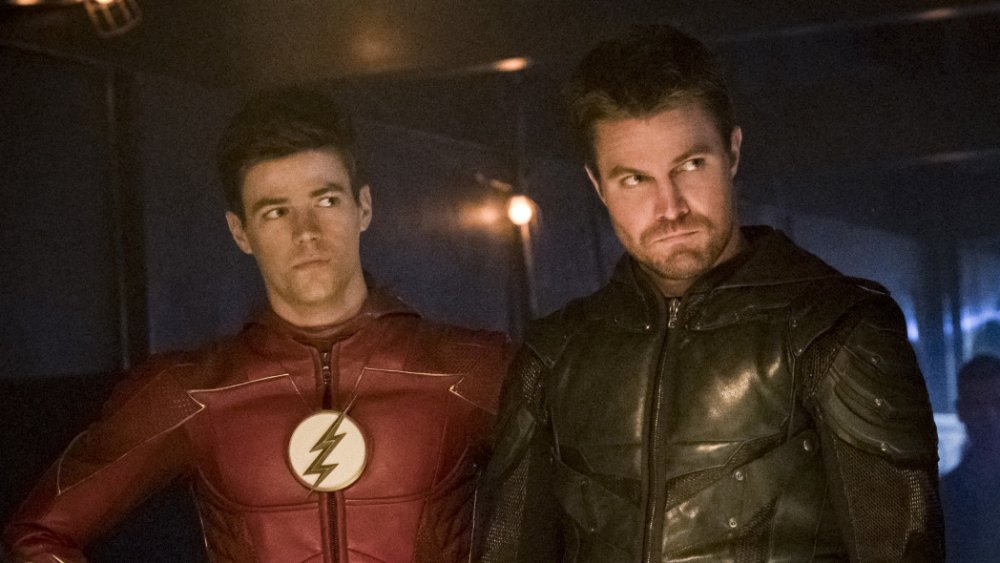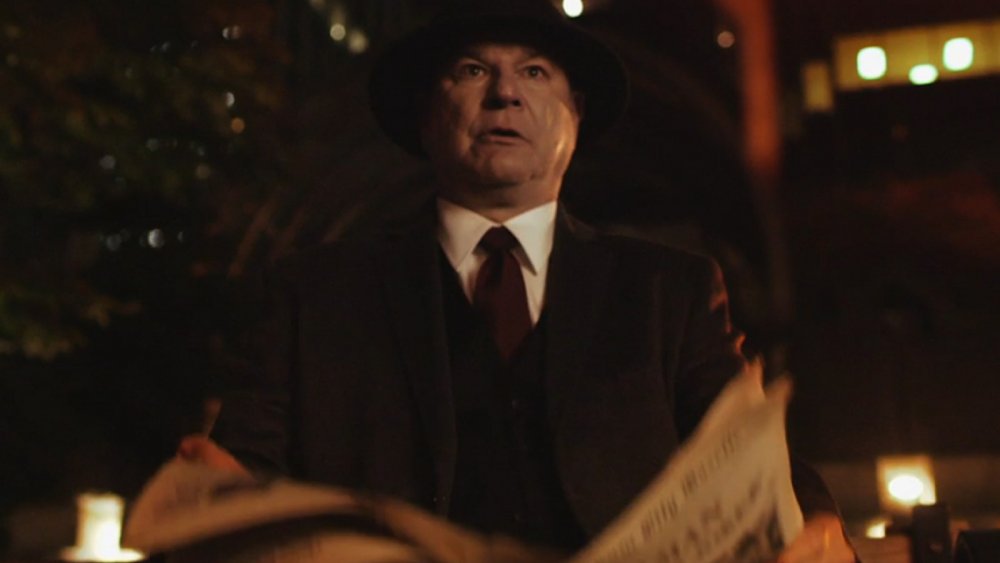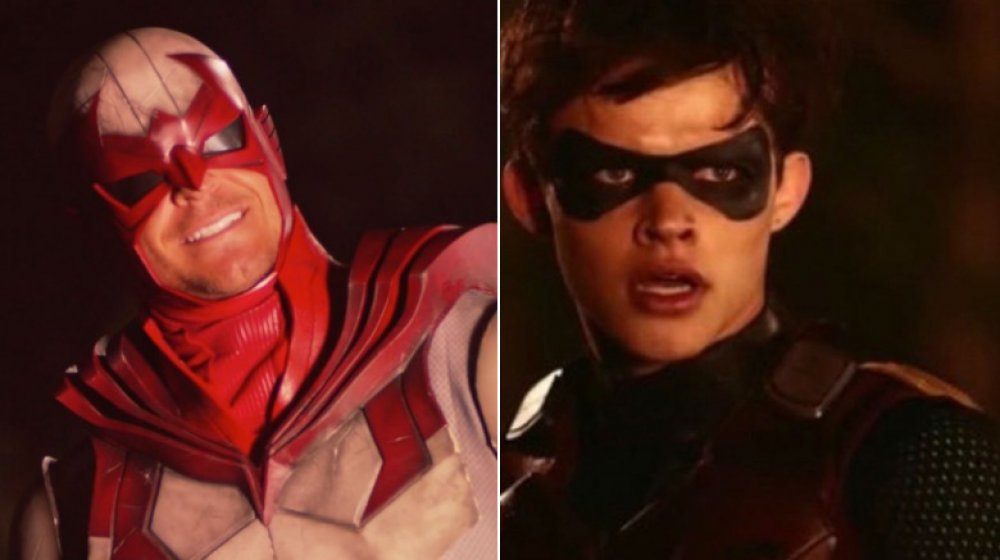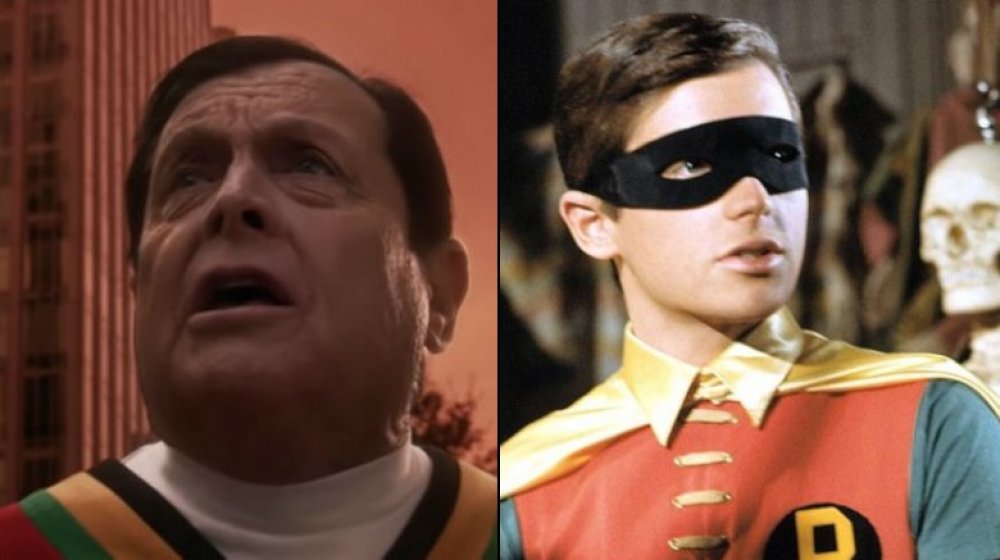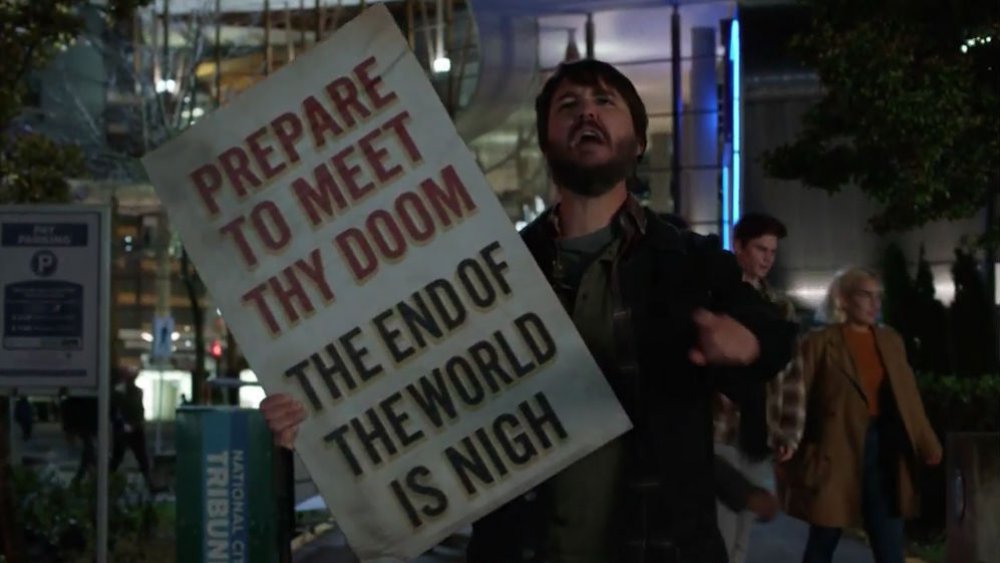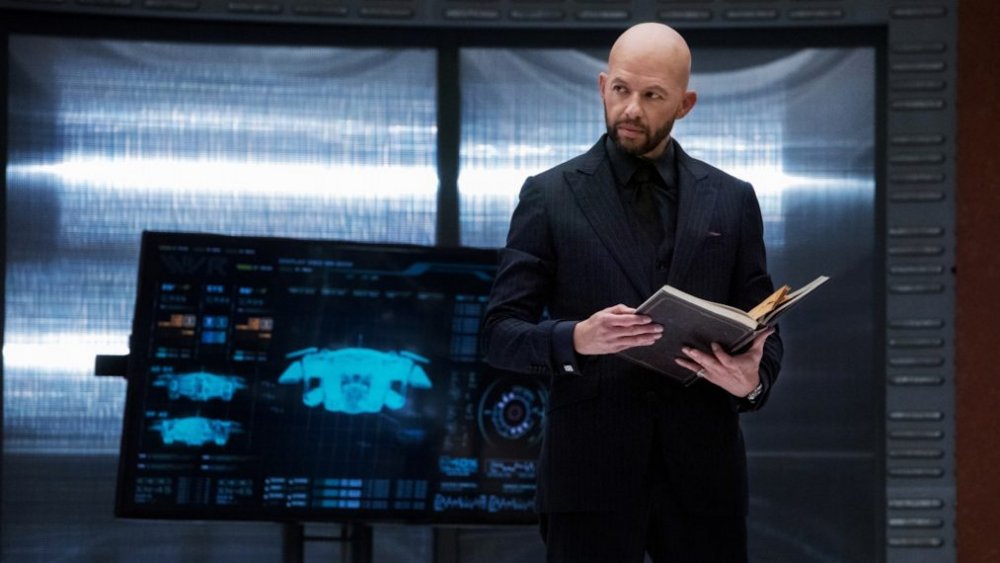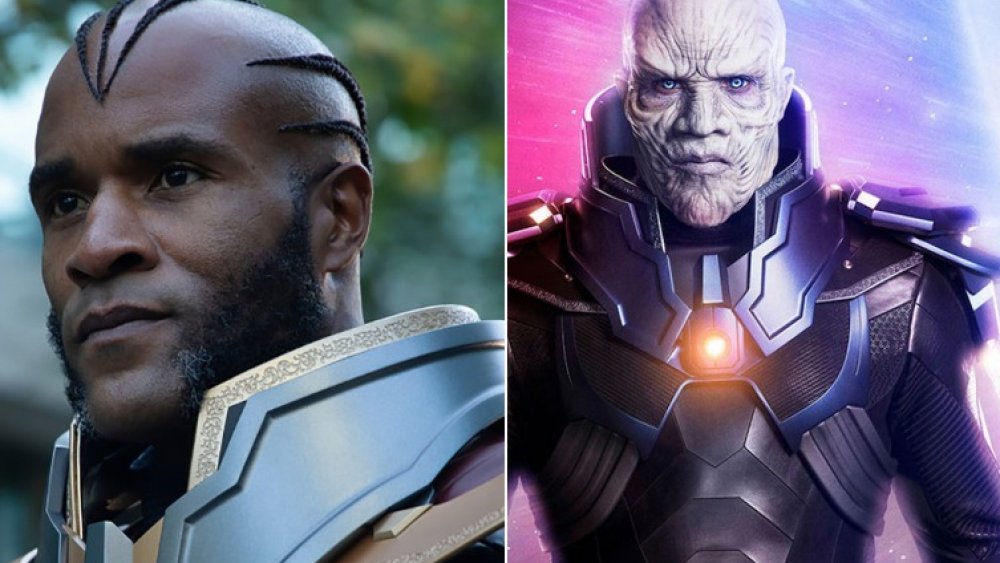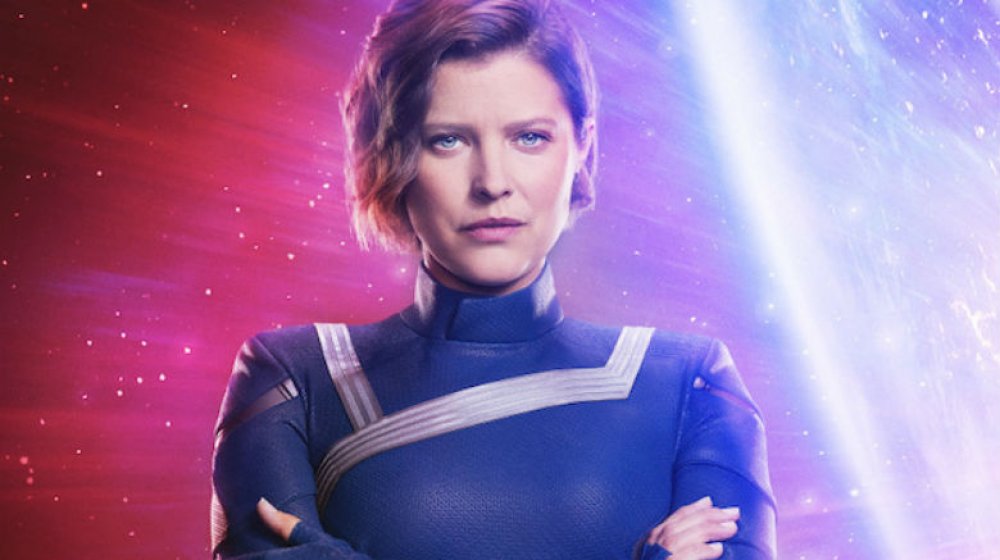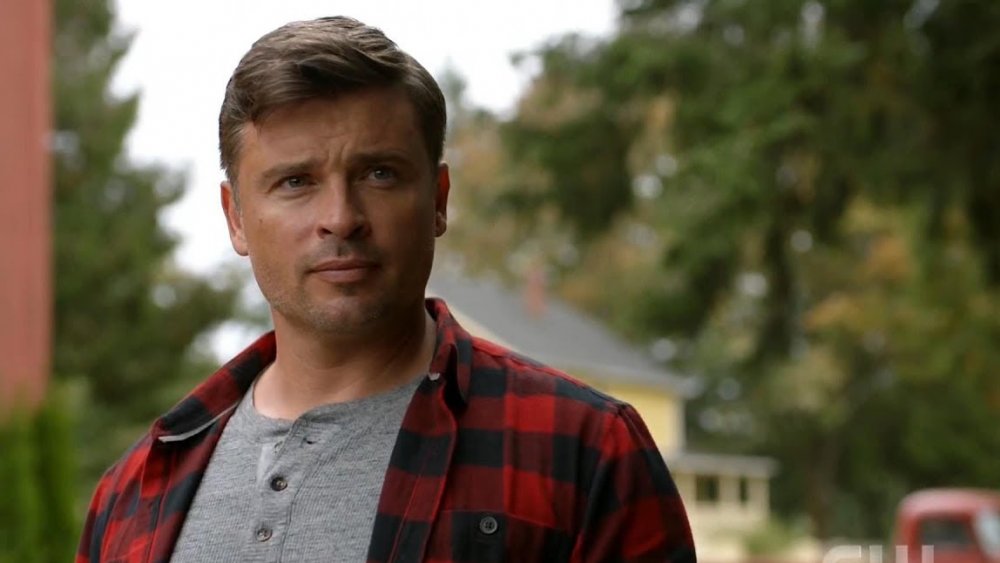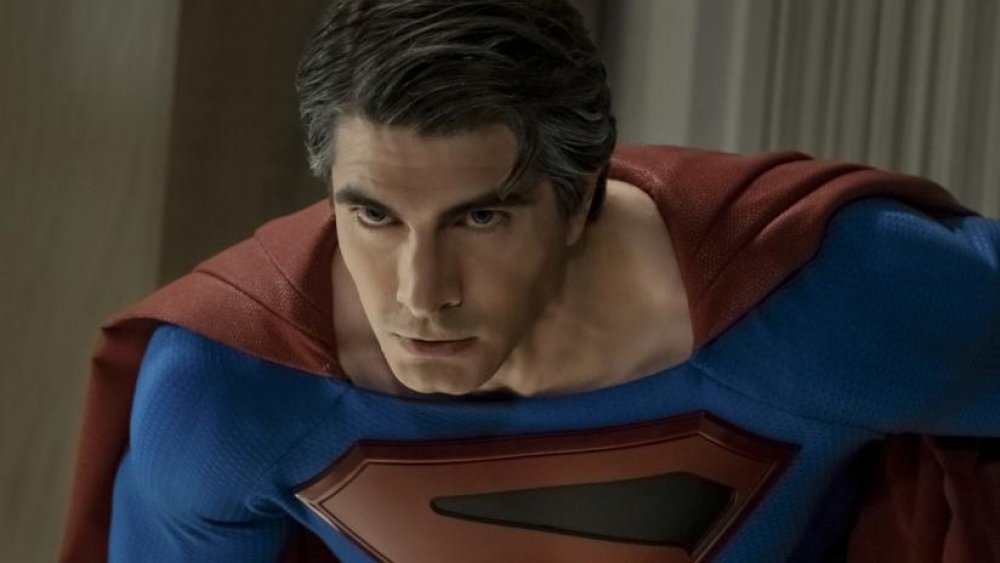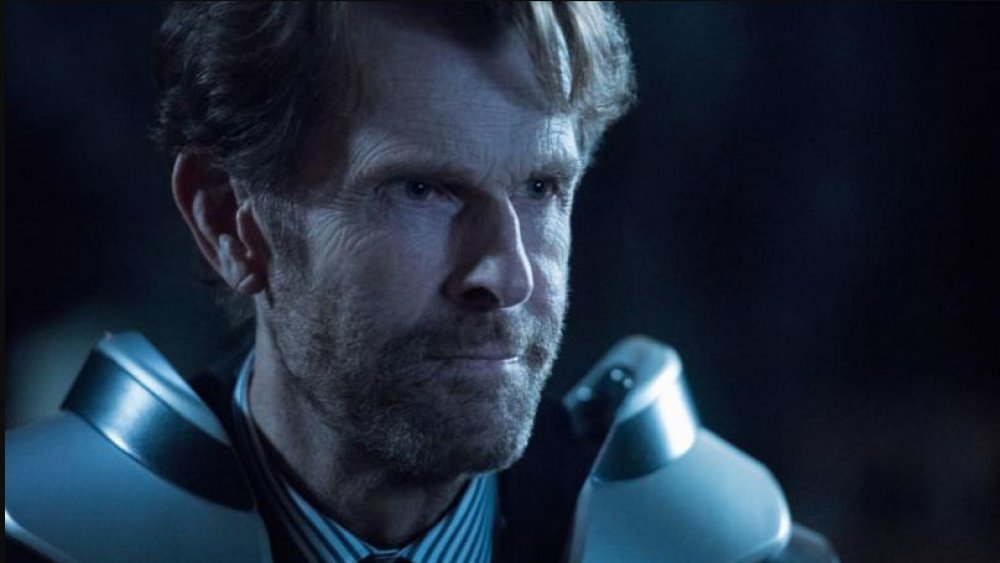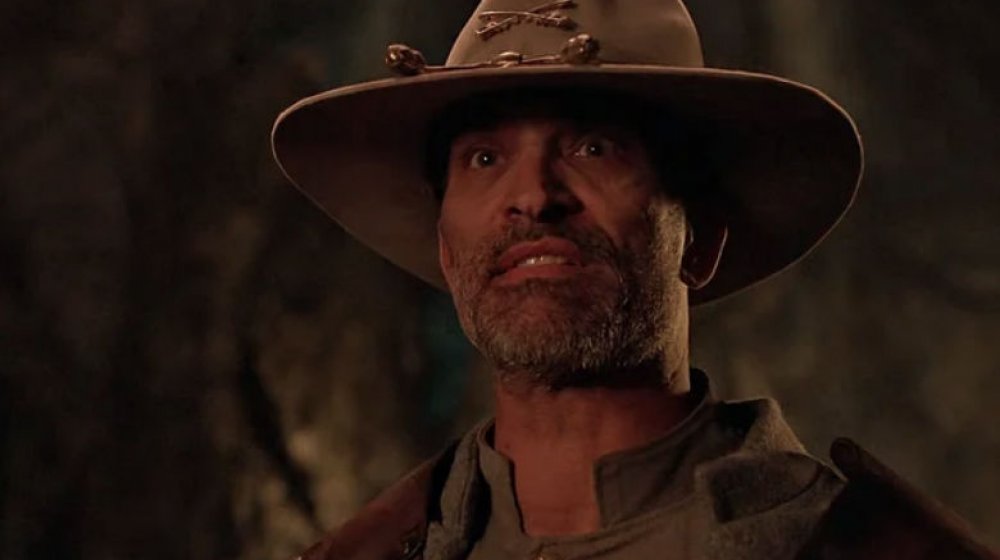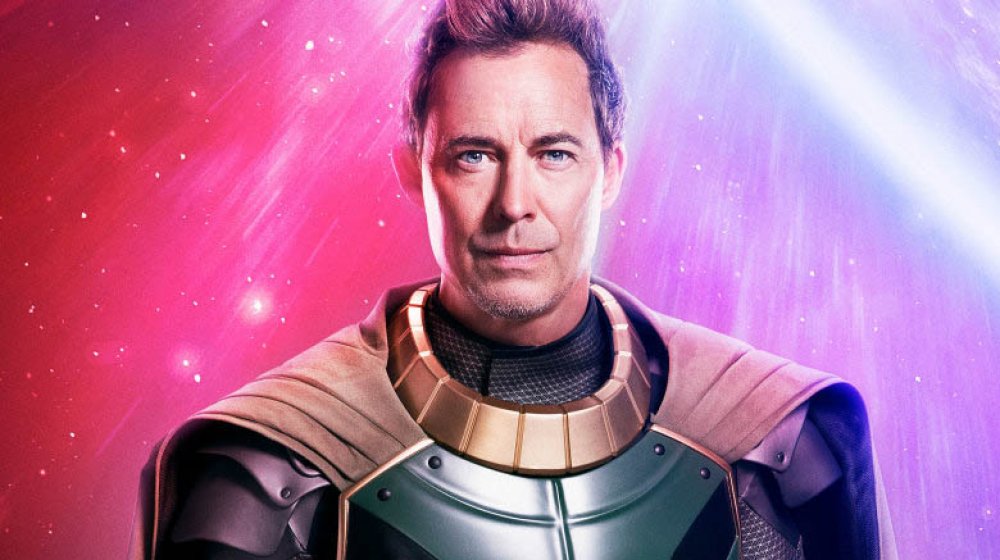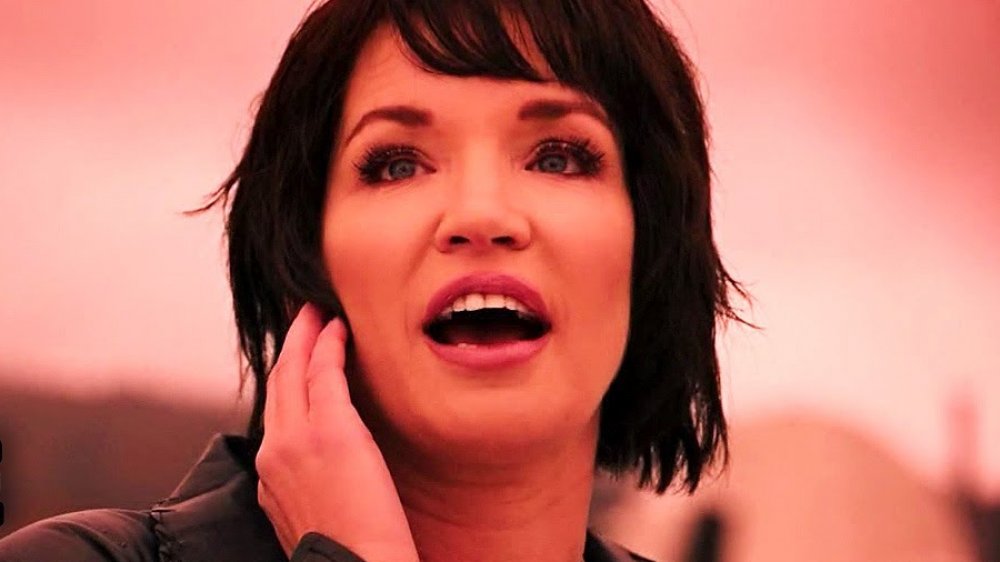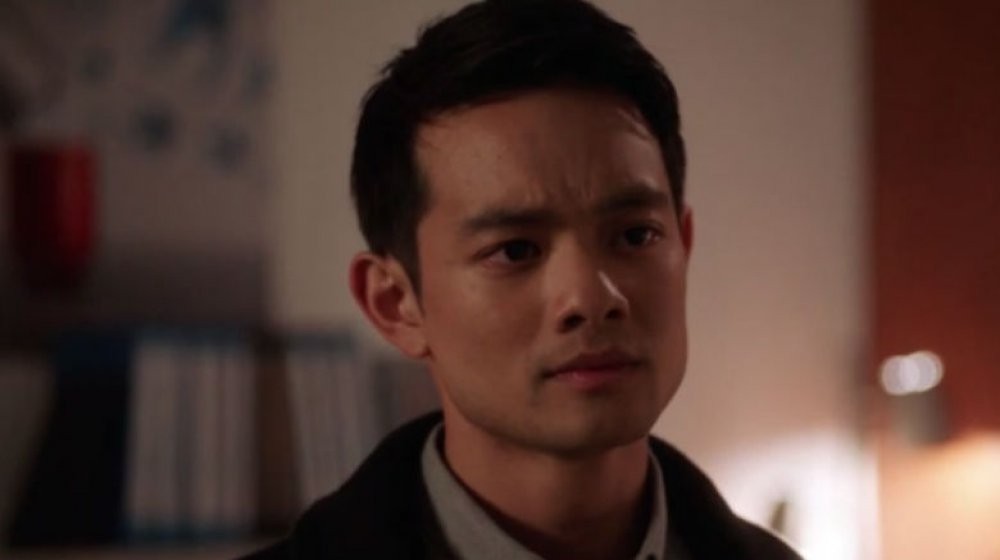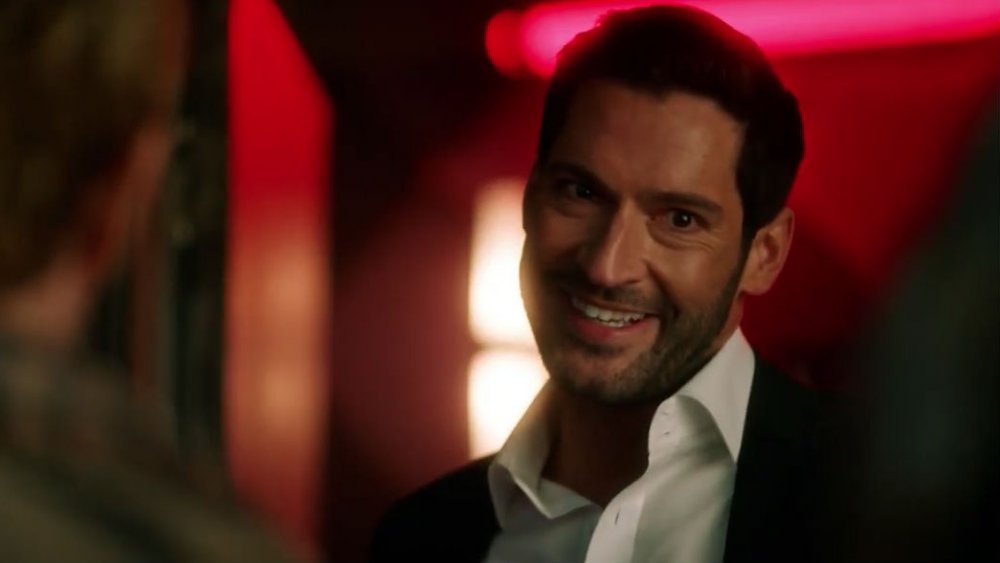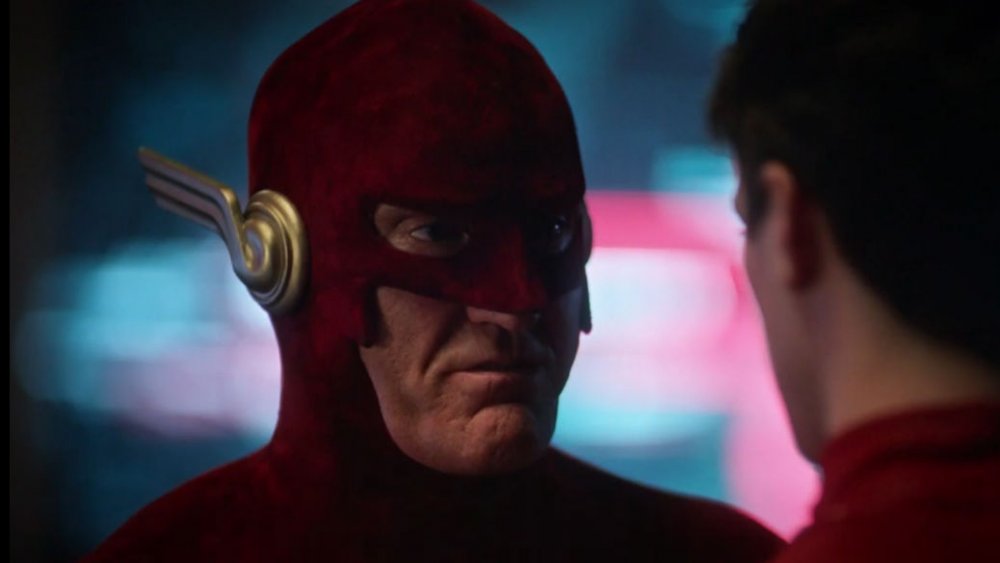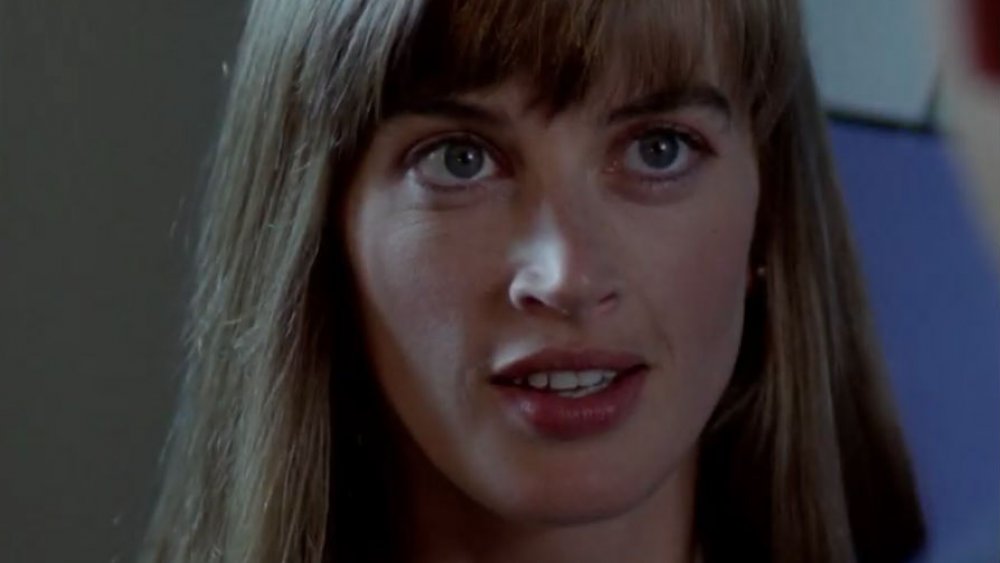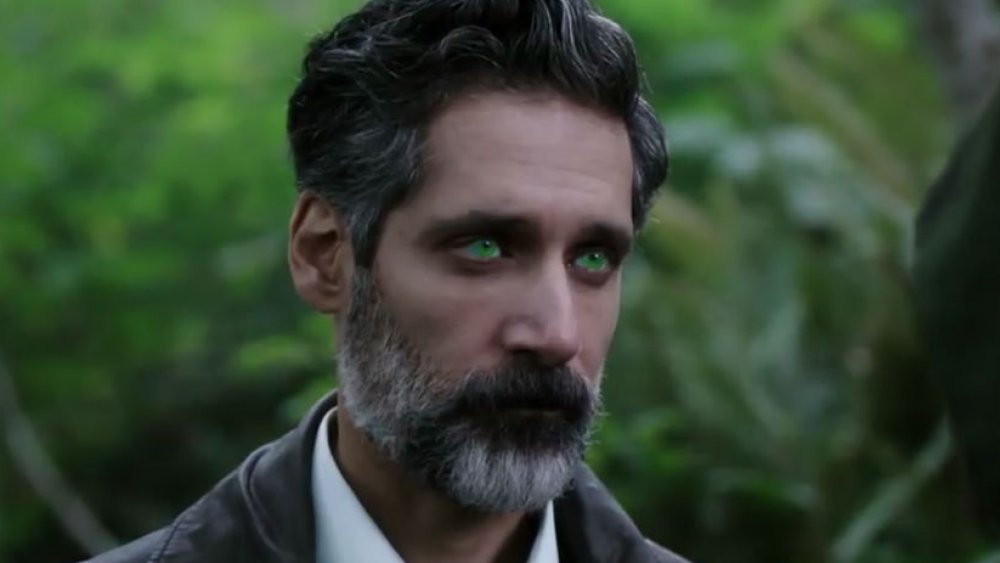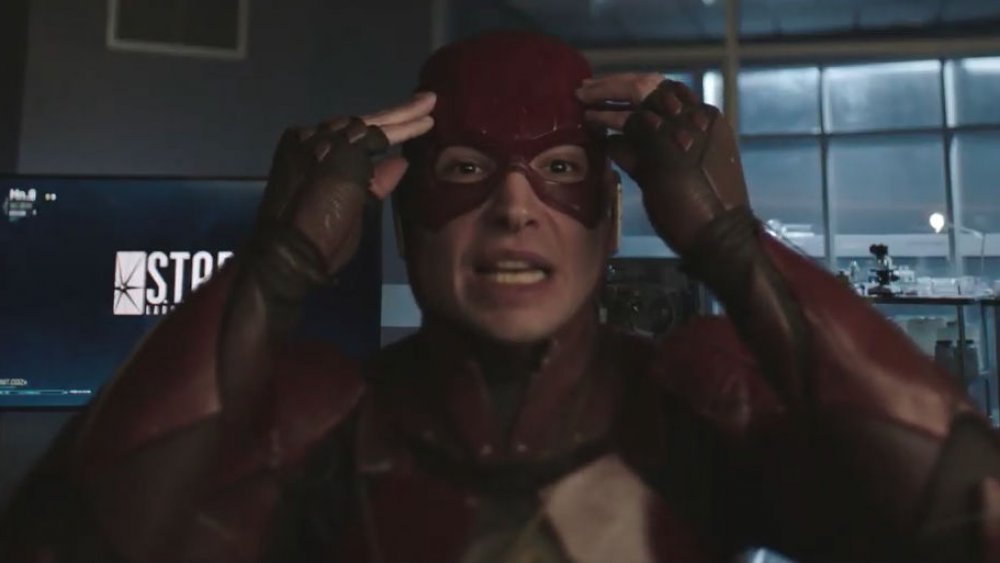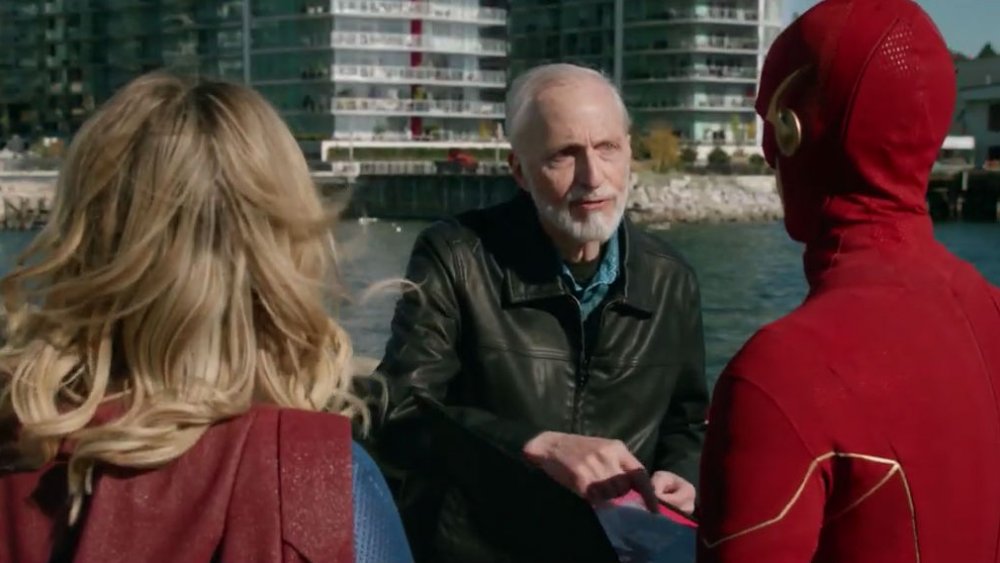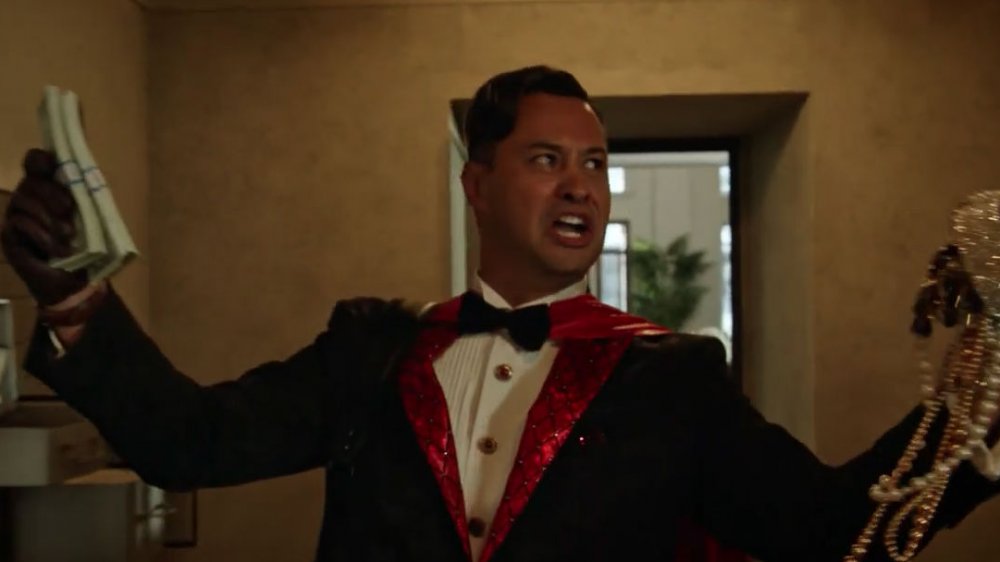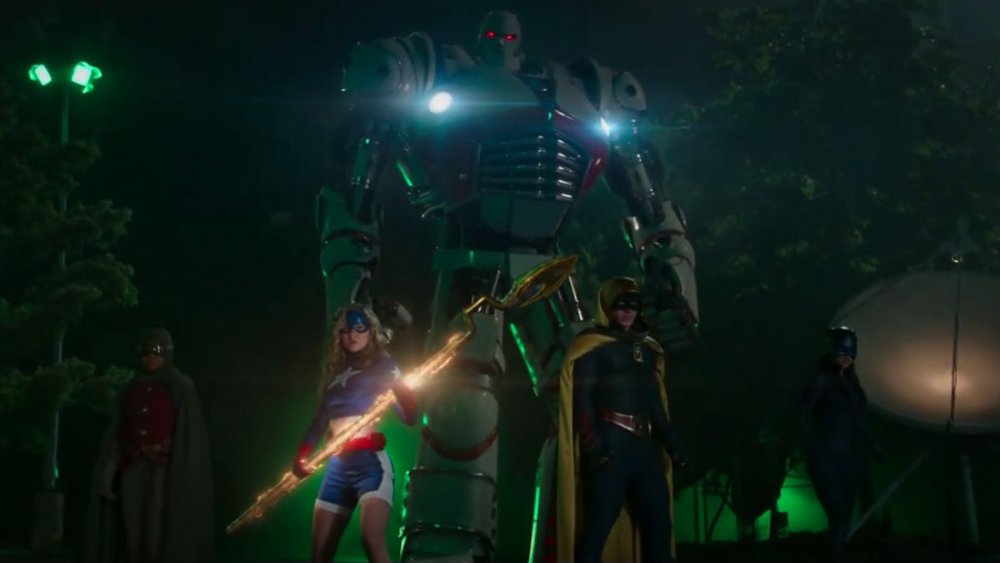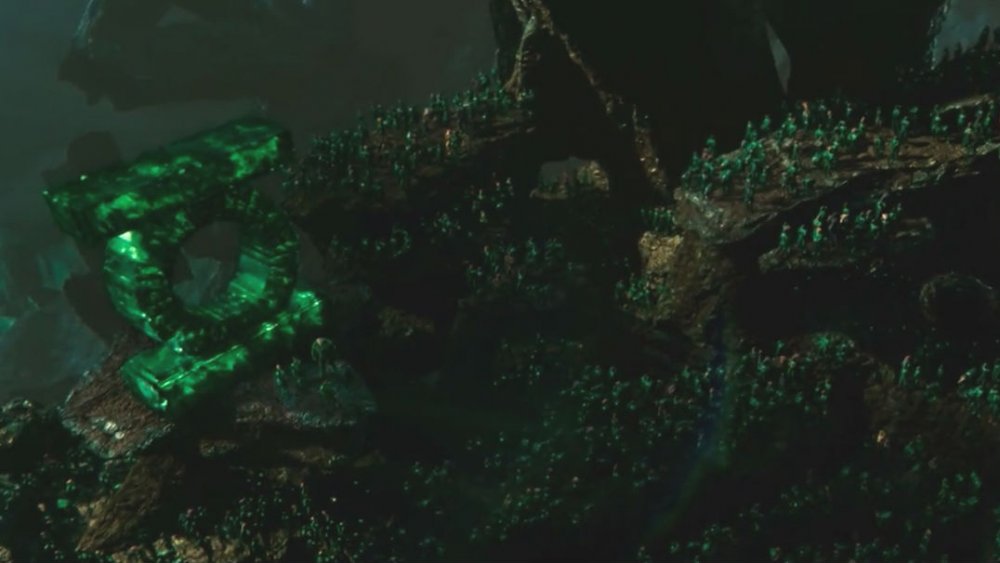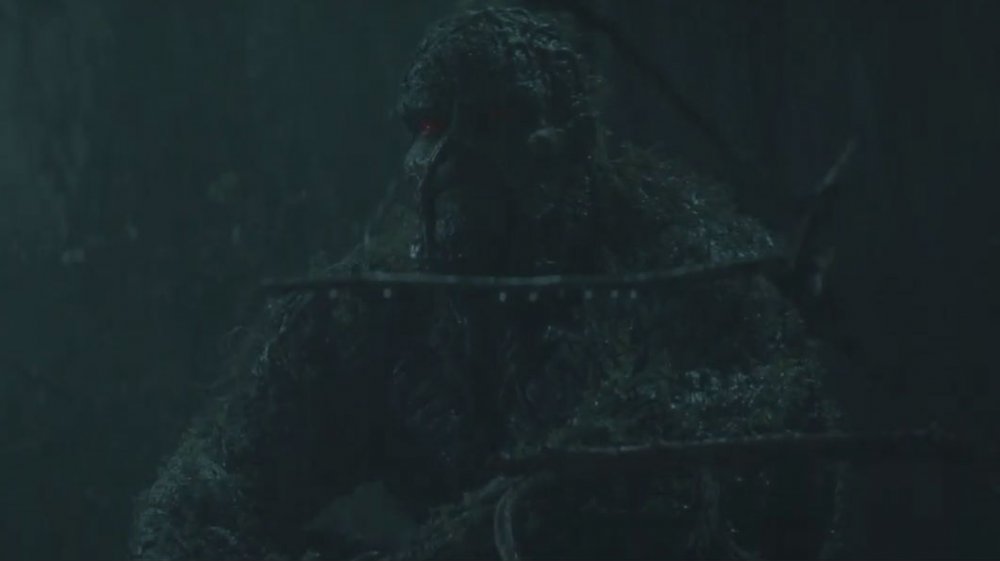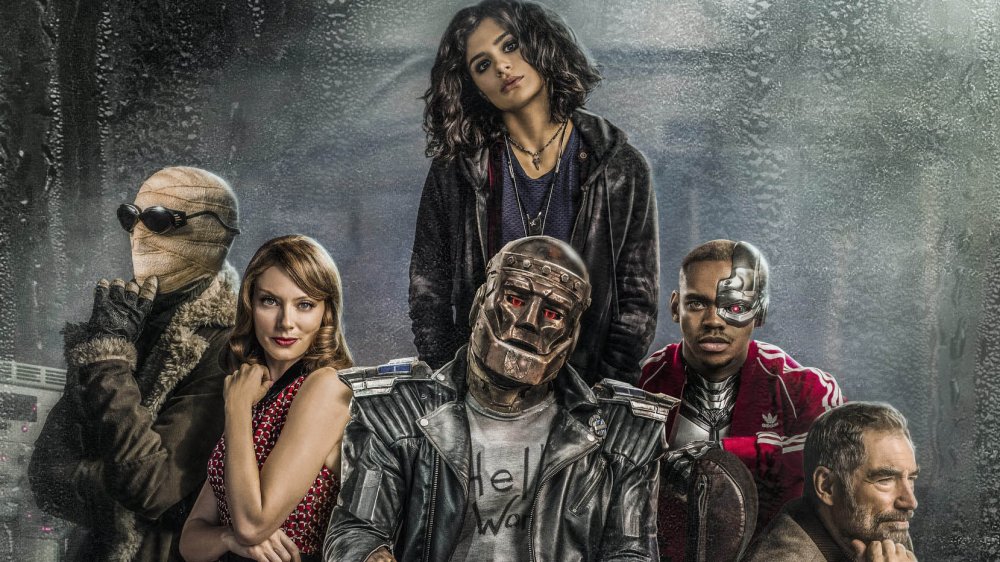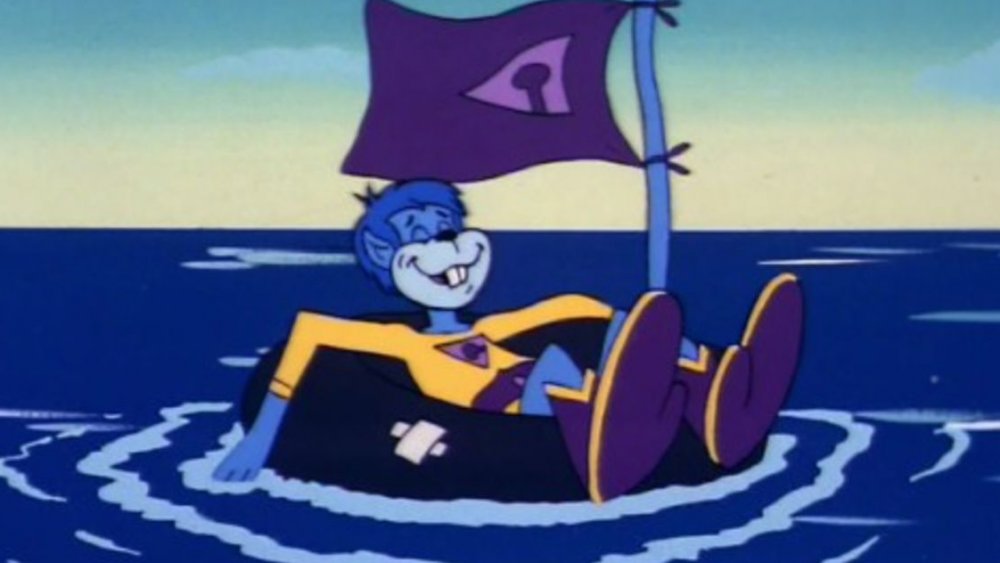Characters In Crisis On Infinite Earths With More Meaning Than You Realized
Ever since 2018's Elseworlds crossover threw together characters from The Flash, Arrow, and Supergirl, fans of the CW's DC superhero shows have been waiting for its sequel, Crisis on Infinite Earths. Not only was the presence of the Monitor — a pivotal figure in the game-changing 1985-86 comic mini-series Crisis on Infinite Earths — a clear sign that Crisis was coming, but the name of the crossover was teased at the end of Elseworlds. Now, the event has finally come and gone and oh, did the cameos flow freely.
DC Comics used the original event series to, among other things, streamline their sprawling narrative by eliminating certain timelines and folding others into more popular ones. As a result, the original Crisis visited just about every corner of DC's comic book universe, and the TV crossover worked hard to do something similar.
Rather than visiting different comic book corners of the DC Universe, the CW's ambitious crossover reached out to the live-action TV and film adaptations of the past and present to weave as many as possible into Crisis' rich tapestry. At the same time, pre-existing Arrowverse characters were reshaped into reflections of the source material's pantheon. Here are the characters in Crisis on Infinite Earths with more meaning than you realized.
By the way, from here on in, be prepared for many SPOILERS.
Did he ever get that Pulitzer Prize?
The CW's Crisis on Infinite Earths doesn't waste any time before it pays fan service to popular DC superhero adaptations of old. Part One of the crossover opens with cameos from across classic comic book films and TV, beginning with Robert Wuhl reprising his role as ambitious investigative reporter Alexander Knox on Earth-89. Wuhl played Knox — the only reporter in Gotham who believed Batman was real and was determined to find out who he was — in Tim Burton's 1989 Batman movie. Knox constantly insisted to his nay-saying colleagues that he was working on "Pultizer Prize winning stuff," though we never learn if Knox's coverage of the Dark Knight wins him the acclaim he always wanted.
Knox's appearance is brief. As he sets aside his paper to regard the sky turning red from the incoming antimatter wave, Knox says, "I hope you're watching, big guy." He gets his answer when the bat signal lights over Gotham, though considering we only see him handle more earthbound foes, it's tough to imagine that world's rubber-suited Dark Knight could do much to prevent the death of the Multiverse.
The Titans make their debut on the CW
Among the myriad of different worlds we're shown succumbing to the antimatter wave in the opening minutes of Crisis on Infinite Earths is Earth-9. We see only two young heroes' faces before the end comes, and if you're not familiar with the DC Universe streaming service's original programming, you might not have any idea who they are.
Both heroes hail from DC Universe's very first original series, Titans. The hero in the red-and-white suit is Hawk — one half of the heroic duo Hawk & Dove — and the younger hero in the domino mask is Robin. Specifically, this Robin is Jason Todd who, in the comics, is the second boy to take on the name Robin, eventually dying violently at the hands of the Joker.
Before Part 5 of Crisis, this cameo was the only one referencing a show existing at the same time as the CW's Arrowverse series. That changes at the end of Crisis' final installment, when quick snapshots of alternate Earths in the restored multiverse reveal stars of other DC Universe series like Doom Patrol and Swamp Thing. The sequence includes shots from the Titans series, letting us know those heroes survived and that Crisis didn't ruin their plans for their third season.
Burt Ward returns to the role that made him famous
The final cameo from Crisis Part One's cold open is from one of DC Comics' earliest live-action adaptations. Burt Ward, who played Robin alongside Adam West in the '60s camp series Batman, is walking his dog in Gotham City as the antimatter wave hits Earth-66.
While he doesn't appear to be crimefighting anymore, the neckline on Ward's shirt has a black-yellow-green pattern reminiscent of Robin's old school costume. And if that, along with the signature Batman theme song, aren't enough to let you know exactly who this is, his single line of dialogue should do the trick. As the antimatter wave hits Earth-66, the much older Dick Grayson turns and cries out, "Holy crimson skies of death!" in a voice that couldn't possibly be mistaken as anyone else's.
We don't know if in 2019 there's a Nightwing or maybe a new version of Batman manning the glowing red phone Commissioner Gordon would call, but considering the multiverse is no more by the end of Crisis Part Three, it seems there isn't much any of the "old chums" of Earth-66 could do in time.
Shut up, Wesley
There's one cameo in Crisis that has nothing to do with an old DC Comics adaptation. Early in Crisis Part One, a bearded man is doing his best to panic his fellow National City citizens on Earth-38, holding up a sign proclaiming "Prepare to meet thy doom, the end of the world is nigh" and shouting about how even Supergirl won't be able to save any of them. Moments later, the self-styled prophet of doom is shut up by a dragon-like creature's random attack. Predictably, the dunce is saved by the quick action of Supergirl.
This isn't an anonymous maniac, but nerd icon Wil Wheaton. Along with appearing in more contemporary fare like Big Bang Theory and How I Met Your Mother, Wheaton became famous as River Phoenix's best friend in the 1986 drama Stand By Me and later as the child genius Wesley who was barely out of puberty by the time he was piloting the Enterprise in Star Trek: The Next Generation.
Jon Cryer's Lex Luthor comes back from his death in Supergirl for Crisis
One of the more fun surprises in Crisis is the return of Jon Cryer as Superman's arch-nemesis, billionaire Lex Luthor. Cryer first appeared as DC's premiere bad guy in three episodes of last season's Supergirl, though the character didn't survive. In Crisis Part One the Monitor uses the Book of Destiny to pull Luthor from the timestream and bring him into the team. The genius villain is just as malicious as you'd expect. By the end of Crisis Part Three he's stolen the Book of Destiny twice and tried to murder multiple versions of Superman. He eventually succeeds in murdering the Superman of Earth-96, replacing him as the Paragon of Truth.
The return of Cryer's Lex Luthor is noteworthy for a number of reasons. Not only is Cryer perfect in the role, but he's a DC adaptation alumnus. Cryer plays Lex Luthor's annoying nephew Lenny in the 1987 bomb Superman IV: The Quest for Peace. In the Crisis Aftermath after-show following Crisis Part Three, Cryer told Kevin Smith he saw his casting as Luthor as a chance to redeem that earlier flop.
Part 5 of Crisis hints this isn't the last we've seen of Cryer's Lex Luthor. When the multiverse is restored, Luthor has somehow gone from being one of the most reviled villains on Earth to accepting a Nobel Peace Prize, and he's somehow become the boss of the D.E.O.
The Monitor and the Anti-Monitor
The Monitor, played by LaMonica Garrett, is a character lifted directly from the original DC Comics event Crisis on Infinite Earths.
When the multiverse was created, most universes were comprised of positive matter, but there was one made of anti-matter. On the Moon of Oa — the planet from which the Guardians of the Universe protect creation with the Green Lantern Corp — the Monitor was born. The Monitor is a living, breathing avatar for the positive matter in the universe. In the anti-matter universe his opposite, the Anti-Monitor, is born on the moon of the planet Qward. Each is instantly aware of the other, and they battle for millennia.
In the later event Final Crisis, this is retconned with the explanation that a being known as the Overmonitor created a probe to explore the multiverse, and this probe separated into two beings — the Monitor and the Anti-Monitor. It's unclear which of these origins Arrowverse will adhere to.
Just as the Arrowverse introduced the Monitor a year before Crisis, the Monitor appeared in DC's comics about three years before the original Crisis, with the enigmatic figure almost always appearing in shadow with his face hidden. Just as it happens in the TV event, the comics crossover sees the Monitor recruit superheroes to help, and just like the end of Part Three of CW's Crisis, in the comic it's a corrupted version of Harbinger that kills the godlike being.
A familiar Arrowverse character is now Harbinger
The character Harbinger is proof that the creative teams behind the Arrowverse have had Crisis in the back of their minds for longer than you might realize.
Audrey Marie Anderson has played Lyla Michaels on Arrow since 2013. She originally shows up as John Diggle's ex-wife, and she eventually replaces Amanda Waller as the head of the clandestine group A.R.G.U.S. John Diggle and Lyla reunite and have a son, and with the coming of Crisis Lyla is transformed into the Monitor's protege Harbinger.
Fans of the comics have probably expected something like this was coming for a while. In the comics, Lyla Michaels is introduced not as an A.R.G.U.S. agent or as anyone's ex-wife, but as Harbinger. The Monitor rescues her from a shipwreck, and in return she works with the godlike being to prepare for the Crisis. Just as it happens in the CW event, in the comics Harbinger is corrupted by the Anti-Monitor and used to kill the Monitor.
Smallville's Clark Kent is happy exactly where he is
After Lex Luthor gets his hands on the Book of Destiny in Crisis Part Two, he decides to wipe out every Superman in every reality. The vengeful (and ultimately futile) quest brings him to man chopping wood at a farm who has no S on his chest and little patience for Lex. The man is Clark Kent, played by Tom Welling, from the hit series Smallville. Lasting ten seasons, Smallville begins as a prequel series showing us characters from the Superman mythos starting out in the series' namesake small Kansas town, and eventually ends with the Kryptonian embracing his destiny as Superman.
But in Crisis, Part Two, we learn that since the conclusion of Smallville Clark has given up his powers and settled in to a simpler life. When Jon Cryer's Lex Luthor travels to Earth-167 to deal with Kent, the revelation that this Superman gave up his powers makes him furious with confusion and disbelief. He leaves, telling Kent he's "taken all the fun" out of the prospect of killing him. Shortly afterward Clark's wife Lois — played again by Smallville's Erica Durance — shows up to find out what's going on. Of course, when Clark tells her, she thinks he's joking.
The Superman of Earth-96 is a mix of different Supermen
As soon as images began emerging of Brandon Routh as the Superman of Earth-96 in Crisis, it was clear this take on Superman was heavily inspired by the 1996 comic Kingdom Come. Set in a future when careless and violent superheroes are destroying property and killing innocent bystanders in huge battles with one another, a disillusioned Superman ends his retirement to put a stop to the needless violence. Routh's Superman outfit, particularly the black included in the Superman insignia, is very reminiscent of the Kingdom Come version.
When we first see Superman in Kingdom Come he is in much worse shape than he is in Crisis, though like the Superman of Earth-96 he's suffering the losses of almost everyone he ever loved. In Kingdom Come, the Joker kills Lois Lane and most of the rest of the Daily Planet staff in a gas attack, and a new hero, Magog, murders Joker on the way to his trial. In Crisis, the Daily Planet's killer is referred to only as "the reject from Gotham," and that points pretty hard in Joker's direction.
But of course this isn't just a call back to a comic. Brandon Routh was tapped to play Superman even though he already has an Arrowverse role — as Earth-1's Atom on Legends of Tomorrow — because the actor stepped into Christopher Reeve's red boots in 2006's Superman Returns.
The Batman of Earth-99 is a dark fusion
In Part 2 of CW's Crisis on Infinite Earths crossover, Batwoman and Supergirl travel to Earth-99 to recruit who they believe is the multiverse's Paragon of Courage: that Earth's version of Batman. Instead of a Paragon, the pair find a bitter, angry Bruce Wayne who is a dark fusion of different versions of the Dark Knight.
Kevin Conroy, best known as the Batman of The Animated Series, has given his voice to Gotham's protector in numerous animated TV, film, and video game projects for the past 27 years. In Crisis Part Two, he physically portrays the Dark Knight for the first time. While Conroy's already played an older Bruce Wayne in the cartoon Batman Beyond, we learn here that Earth-99's Wayne is much different from the Wayne who mentors a new, younger hero. Nodding to the version of the character in the dystopian 1996 comic Kingdom Come, Conroy's Batman is confined to an advanced exoskeleton he needs to move.
We learn that this version of Wayne would eventually resort to murder to achieve his goals, including killing his world's Superman. Moments before his death, Wayne tells Supergirl, "My parents taught me a very different lesson — that life only makes sense if you force it to." The line comes from the 1986 comic Batman: The Dark Knight Returns, from Batman's narration as he fights Superman, though even that darker realization of Bruce Wayne doesn't seek to kill Clark.
Crisis shows us Jonah Hex before his trademark scar
In Crisis Part Two, some of the heroes travel to the past of Earth-18 in hopes of reviving Oliver Queen, who sacrificed himself to save a billion people at the end of Part One. There's a Lazarus Pit waiting for the heroes deep in a North Dakota mine, but that isn't all that's waiting. Before they can revive Oliver, Sara Lance and Oliver's daughter Mia have to face an as-yet unscarred version of the western antihero Jonah Hex.
Hex first appeared in the '70s Western comic All-Star Western, and has been a staple of DC's wild west stories ever since. Crisis Part Two isn't his first live-action appearance either. Josh Brolin played the gunslinger in the 2010 box office bomb Jonah Hex, and the same actor portraying Hex in Crisis, Johnathon Schaech, plays a more scarred version of the character in a recurring role on Legends of Tomorrow.
Crisis Part Two seems to suggest it's Sara Lance who causes Hex's memorable scar. As she cuts his face with a knife, she says, "Guess you were going to get this scar eventually." Of course, Hex's scar has always appeared to be the result of something worse than a knife. In the comics, the scar is the result of a fire. Maybe the antihero has more things coming his way after Sara Lance's "facial."
The Pariah of Crisis is a changed man
Ever since Tom Cavanagh's original Flash character Harrison Wells bit the dust, it seems we've gotten new alternate Earth versions of Wells every season. Sometimes they're scientifically illiterate fakes, and sometimes they're French-born detectives with a penchant for not paying their bills. This season of Flash begins with a version of the character named Nash Wells, who has a bit of an Indiana Jones flare, but that changes when he unintentionally frees the Anti-Monitor and causes the Crisis. As punishment, Wells is made into Pariah and is forced to witness tragedy as it unfolds.
Things work a bit differently in the comics. In the Crisis comics Pariah's real name is the kind of Star Wars-y sounding Kells Mossa. Kells conducts experiments allowing him to see the birth of the universe, but in doing so attracts the attention of the Anti-Monitor, who destroys Mossa's Earth. The Monitor saves Pariah's life and gives him the unenviable ability to travel from Earth to Earth, witnessing as each is destroyed.
Crisis brings us back to Birds of Prey
Crisis Part Three opens in New Gotham on Earth-203 with a hero jumping rooftops, unable to do anything as the antimatter wave approaches and eventually wipes her and her world from existence. Unlike many of the multiverse cameos we've seen in Crisis, this time we actually get to see as the wave hits the hero, killing her. The hero is Huntress, played by Ashley Scott, from the 2002-03 TV series Birds of Prey.
Huntress wasn't the only hero on the show. Over her coms we hear the voice of Oracle, played by Dina Meyer. While we don't get the chance to actually see Oracle, Meyer's IMDb page confirms it was her voicing the hero for Crisis. Oracle is Barbara Gordon, formerly known as Batgirl, who becomes the intelligence arm of the Birds of Prey after she's paralyzed by a bullet from the Joker. In the comics, she would not only become the intelligence arm for the Birds of Prey, but for the Bat family as a whole — sometimes even for the Justice League.
Crisis introduces us to the second version of The Atom
In Crisis Part Three, Team Flash's Cisco Ramon joins the efforts to find the multiverse's Paragons, and among other his efforts lead them to a scientist named Ryan Choi, the Paragon of Humanity. He's unique among the Paragons in that he isn't a superhero or supervillain, though if the source material is any gauge, that won't stay true for too long.
In DC Comics, Ryan Choi first fills Ray Palmer's place by taking his job at Ivy University and later by taking on his abilities as the new version of the shrinking hero Atom. Choi's solo series All-New Atom folded after 25 issues, though he remains Atom in the comics. He's eventually murdered by Deathstroke, but after DC's line-wide New 52 reboot and the subsequent event Convergence, Choi returns to the narrative. He appeared in the most recent Justice League of America series as the Atom, alongside an eccentric line-up that included Batman, Lobo, and Killer Frost.
Crisis ends without Ryan Choi joining the superhero club, as the Atom or anyone else. However, it is Choi's idea to neutralize the Anti-Monitor by creating a device that causes him to shrink infinitely, so it could be a more super future is in store for the Paragon of Humanity.
Crisis speaks of the devil
Perhaps no one should have been shocked that Crisis Part Three features a cameo by Tom Welling as Lucifer Morningstar, the lead of Netflix's Lucifer and, yes, the devil (formerly) himself. After all, the world that John Constantine, John Diggle, and Mia Smoak travel to is Earth-666. Regardless, it's a pleasant surprise when Lucifer shows up with a woman on each arm, and absolutely fitting that seeing John Constantine standing in front of him makes him less than happy.
Netflix, DC Comics, and the CW largely have Neil Gaiman to thank for this version of Lucifer. The character first appears in Gaiman's classic Sandman series as an adversary to its hero, Morpheus, and later causes Morpheus and the rest of existence no end of headache when he decides he simply doesn't feel like being the caretaker for Hell any longer. He continued his self-imposed exile in his solo comic series Lucifer which was later adapted into a TV series for Fox. Lucifer was canceled by Fox after its third season, but the series was picked up by Netflix. In June 2019 we learned that Lucifer had been renewed for a fifth and final season on the streaming service.
Crisis answers the question of what happened to the Flash of Earth-90
Crisis Part Three sees the return (and sacrifice) of the Flash of Earth-90. Last year's CW crossover, Elseworlds, opened with this version of the Flash being the sole surviving hero on Earth-90. He soon joined the Arrowverse heroes to face the Monitor, but disappeared early in the crossover without a trace. We now know where he was — as a prisoner of the Anti-Monitor, Earth-90 Flash was forced was to run a treadmill that powered the antimatter wave. Toward the end of Crisis Part Three, he sacrifices himself to stop the wave and save Earth-1.
This isn't just another alternate universe Flash. Played by John Wesley Shipp, this Flash is the same hero who was the lead for the short-lived The Flash series from 1990 to '91. CW's The Flash has never been lazy about paying tribute to its predecessor. Shipp has played multiple roles on The Flash, including versions of the hero from other worlds, as well as playing Barry Allen's father, Henry Allen. Other actors from the earlier series have shown up, including Mark Hamill (who played the Trickster in the '90s series) and Amanda Pays (who plays a different version of Tina McGee).
In his final moments, the Flash of Earth-90 remembers Christina McGee
In what must be a heartbreaking moment for fans of the '90s The Flash series, John Wesley Shipp's version of Barry Allen sacrifices himself to save the multiverse. In his final moments, Earth-90's Flash thinks back to a moment with the love of his life.
If this moment confused you, then you may never have seen the 1990-91 The Flash series. The woman the younger version of Barry Allen is talking to is Tina McGee, Flash's love interest in the series. Just to make sure they tug at the heartstrings as much as possible, the score of the earlier series is played during Flash's sacrifice. Shortly before his death scene, the Flash of Earth-90 refers to Tina as his former wife, so presumably at some point after the conclusion of the '90s series the two tied the knot.
Amanda Pays has sort of reprised the role as an alternate version of the character on the more recent version of The Flash.
Jim Corrigan is probably here to make Oliver Queen the new Spectre
In the second and third installments of Crisis on Infinite Earths, the heroes search for a way to bring Oliver Queen back to life. In Part Two they bring his body to a Lazarus Pit on an alternate Earth, where they manage to revive Green Arrow's body, but not his soul. The heroes recruit John Constantine to help get Queen's soul, and in Part Three they travel to Purgatory to retrieve it. After a tearful reunion it seems that Oliver will return to the land of the living... until a mysterious man named Jim Corrigan appears.
If you're a DC Comics fan, then that name means a lot. Jim Corrigan is a former police detective who takes on the role of the Spectre, a powerful entity who in some incarnations is meant to be the literal Wrath of God. In the comics, Corrigan was eventually replaced as the host for the Spectre by the Green Lantern Hal Jordan, who had died in the 1996 event Final Night. The fact that Corrigan appears when he does and stops Oliver Queen from crossing over back to the land of the living suggests that it may now be Oliver Queen who is called upon to be the host of the Spectre.
This isn't the first time Jim Corrigan has appeared in a live-action series. Emmett Scanlan played Corrigan in the short-lived Constantine series. A few years earlier Fox announced development of a Spectre live-action solo series, though it never saw the light of day.
Crisis lets the Flash meet the Flash
The beginning of Crisis Part 4 delivered a cameo that set the internet on fire. On a mission from Oliver Queen (new host of the Spectre) to reunite all the heroes lost in the Speed Force, the first hero Flash runs into is himself. Well, not really, but sort of. The Grant Gustin Flash of the CW comes face-to-face with his big screen counterpart, the Ezra Miller version of the Flash who appeared in 2017's Justice League, not to mention cameos in Batman v Superman: Dawn of Justice and Suicide Squad.
Both versions of Barry Allen are absolutely bewildered by the meeting, with the movie Flash briefly convinced the TV Flash is a cosplayer who wants to take a selfie with him. They have a funny but awkward moment appreciating each others' costumes. Neither of the speedsters seems to have any idea how this is possible. The movie Flash is apparently unaware of the anti-matter wave, while the TV Flash is left to wonder how any alternate versions of himself can exist when the rest of the multiverse has been annihilated. We aren't given any definitive answer about how the meeting is made possible, though one potential explanation is the non-linear way time works in the Speed Force.
Regardless of how it's possible, it's sure to be a fan-favorite scene, and it adds some much-needed levity during a time when things seem very serious and dire.
A Crisis cameo pays tribute to the source material in a big way
Crisis on Infinite Earths Part 5 gives us a cameo that probably went over more heads than, say, the Ezra Miller Flash or the appearance of Smallville cast members. But plenty of DC Comics readers knew exactly what was going on. Shortly after the multiverse is restored, Flash and Supergirl find themselves in a brief team-up in National City against Weather Witch. After they take her down, the heroes seem confused, each one thinking the other has somehow traveled to their Earth. A man calling himself only "Marv" approaches them to ask for autographs and his dialogue is what lets the two heroes know that their formerly disparate Earths have been fused into the tapestry of one — Earth Prime.
Fittingly, Marv is not a random civilian. His name is Marv Wolfman and he is, in fact, the guy who wrote the original Crisis on Infinite Earths comic book mini-series. Wolfman's worked in comics for decades, with both his work on Crisis and the series New Teen Titans — both of which he wrote alongside legendary artist George Perez — proving to be two of the biggest landmarks of his career. He also spent some time in the Marvel bullpen, and among other things he co-created the half-vampire warrior Blade made famous by Wesley Snipes.
Crisis gives us a Sargon the Sorcerer not quite as heroic as his comic book counterpart
Shortly after J'onn J'onzz updates most of the heroes in the restored Earth Prime on what has happened, they respond to a giant version of the stuffed doll Beebo — a hilarious recurring character on Legends of Tomorrow — rampaging through Star City. With the help of Mick Rory, a.k.a. Heat Wave, who was in town for a signing of his new romance novel, the heroes figure out Beebo is just a distraction. The true villain is a caped, bow-tie wearing magician identifying himself as Sargon the Sorcerer, who is busy emptying one of Star City's banks.
Sargon is a character from DC's comics, though he's actually a Golden Age hero who is often depicted wearing a turban and wouldn't be caught dead robbing a bank (or using giant stuffed dolls as distractions). His depiction here has the potential to actually irk some fans because, ironically, one of Sargon's few post-Golden Age appearances is in the original Crisis on Infinite Earths comic book event in which he not only is not a bank robber, but heroically sacrifices his life along with other sorcerers in a tie-in issue of Swamp Thing.
Crisis gives us a preview of Stargirl
In the last installment of his aftershow, Crisis on Infinite Earths Aftermath, following Part 3 of the CW crossover, Kevin Smith aired a preview of the upcoming series Stargirl, set to both stream on DC Universe and to air on the CW. But the end of Crisis Part 5 gives us a look at not only Stargirl, but her super-powered allies during the series of glimpses we get of the different alternate Earths in the restored multiverse.
The first alternate Earth we see is Earth-2, which will apparently be the home of the new Stargirl show. The shot is introduced with two heavy robotic feet slamming into the ground, which belong to the massive robot Stripe. Courtney Whitmore is there as the titular hero, and along with Stripe, she's joined by Doctor Mid-Nite, Hourman, and Wildcat. Together, they will presumably be Stargirl's answer to the classic supehero team, the Justice Society of America.
The Green Lantern Corps makes an appearance
There was speculation that Crisis would feature David Ramsey — who plays John Diggle on Arrow — appearing as an alternate Earth version of the Green Lantern John Stewart. The Earth-90 version of the Flash mistakes Diggle for Green Lantern in the 2018 crossover Elseworlds, so the rumors were understandable, though the event begins and ends without Ramsey bearing the iconic green power ring.
But the Green Lanterns aren't completely absent. One of the alternate Earths we visit at the end of Part 5 of Crisis is Earth-12, home of the 2011 film Green Lantern. The shots used are careful not to give us any close-ups of the actors, and our brief visit to Earth-12 ends with a wide-shot of the Corps gathered on their headquarters — the planet Oa.
Considering his vocal regrets about the film — including fierce pot-shots at the flick in both Deadpool movies — it isn't a surprise Ryan Reynolds doesn't appear himself as Hal Jordan, as much as that might have gotten fans cheering.
Crisis pays tribute to a series that hardly had a chance
In the series of visions from different parts of the multiverse at the end of Crisis Part 5, we get visits from current series like Titans and Doom Patrol as well as the upcoming series Stargirl. But Crisis doesn't forget one of the sadly canceled DC live-action adaptations. On Earth-19 we get a brief shot of Andy Bean relaxing in the Louisiana swamp as the plant-based creature known as Swamp Thing.
Swamp Thing was a short-lived DC Universe horror series whose cancellation was announced before the second episode even aired despite largely favorable reviews. We've never heard any official word on exactly why Swamp Thing got the axe. A widespread story claimed the cut came because of budgetary concerns caused by an accounting error on the part of the North Carolina state government, but that has since been debunked.
Regardless of why Swamp Thing didn't seem to get a fair chance at life, it was good to see CW's Crisis pay tribute to the series.
The Doom Patrol celebrates the multiverse's return
As part of the series of visits to alternate Earths featured at the end of Crisis Part 5, we visit Earth-21, where we find the majority of the cast of DC Universe's Doom Patrol dancing in front of their mansion.
It's an interesting addition for a couple of reasons. First, it confirms that — despite of most of the characters being introduced on the series Titans and, in fact, one of Titans' first episodes being named "Doom Patrol" — DC Universe's Titans and Doom Patrol take place in separate narratives. We know this because while the members of Doom Patrol are boogieing down on Earth-21, the Titans are shown on Earth-9.
It's also noteworthy that Earth-21 is chosen as their home. Most of the numbers given to alternate Earths in Crisis are significant, and usually have something to do with the time the respective media was released. For example, in Crisis Part 1, Robert Wuhl reprises his role as reporter Alexander Knox from Tim Burton's Batman — a film released in 1989 and which Crisis tells us takes place on Earth-89. Likewise, we find Burt Ward of the sixties Batman show — which premiered in 1966 — on Earth-66.
The Hall of Justice includes an old friend
Crisis saves perhaps the least expected cameo for last, though it's debatable whether or not you could even call it a cameo. After the members of the new Justice League try out their conference table chairs, they hear some kind of squeaking animal noises. At first, you might be thinking the giant blue puffball Beebo has returned for a second round, but no — it's a different blue animal being referenced. The camera goes to a back room in this new Hall of Justice, where we see a cage that seems to have been recently opened. We don't see the creature that's escaped, but the name "GLEEK" is printed on the bottom of the cage.
Gleek can only be one beast: the alien monkey companion to the Wonder Twins on the classic '80s Superfriends cartoon. Was this just a nod to tales of old, or could it be that we'll see Gleek and maybe even the Wonder Twins in the Arrowverse in the not too distant future? Well, if there's anything Crisis has taught us, it's that when it comes to how far its creators are willing to reach back into the DC Comics mythos and that of its related media, nothing is out of bounds.
